“There was a deep muffled roar; the ground in front of where I stood rose up, as if some giant had wakened from his sleep and was bursting his way through the earth’s crust, and then I saw huge columns of smoke and flames shoot hundreds of feet into the air, while masses of clay and stones, tons in weight, were hurled about like pebbles.”
~Rev. William Joseph Gabriel Doyle
Army Chaplains’ Department of the British Army
Messines Ridge, June 7, 1917
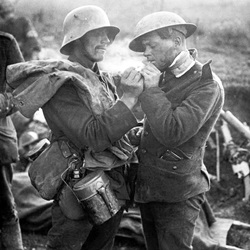
On Christmas Eve 1914, a Christmas truce originated near Comines-Warneton, Belgium when a cease-fire was called to bury the dead between the lines (“no-man’s land”).
Some reports say German soldiers cheerily called “come over here” to their British counterparts, while others recall Germans placing small Christmas trees on top of their entrenchments on a frosty Christmas Eve. One British soldier compared the lit trees to “the footlights of a theater.”
A young Bavarian officer was one of many who shouted that a Christmas truce should be made, and that both sides should leave their trenches to approach the other. He recalled that the British eventually agreed, and that “a man came out of their trenches, and I on my side did the same. We shook hands a bit cautiously.”
They were joined by others and the next day was filled with intermittent visits in no-man’s land, where men found their enemies waiting peacefully.
Why am I telling you this? Because 2 ½ years after that famous Christmas Truce, another event took place just five miles up the road from Comines-Warneton … in another Belgian town … Mesen.
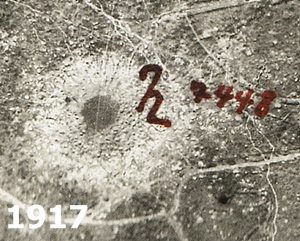
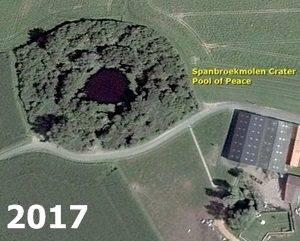
1917 – The British 2nd Army, led by Gen. Herbert Plumer, scored a crushing (and explosive) victory over the German 4th Army at Messines Ridge in Belgian Mesen, West Flanders.
The evening before the attack, General Sir Charles Harington, Chief of Staff of the Second Army remarked to his staff, “Gentlemen, I don’t know whether we are going to make history tomorrow, but at any rate we shall change geography.”
They certainly did.
British forces put careful planning into the battle: for the previous 18 months, soldiers – including troops from Australia and Canada – had worked to place nearly 1 million pounds of explosives in 21 tunnels under the German positions. The tunnels extended to 2,000 feet in length, and some were as much as 100 feet below the surface of the ridge, where the Germans had long since been entrenched.
The attack on Messines Ridge started with the tried and tested artillery assault. In the week leading up to the attack, over 2,200 artillery guns pounded German lines with as many as 3 million shells.
Starting at 3.10 a.m., the mines at Messines were fired within the space of 20 seconds. The joint explosion ranks among the largest non-nuclear explosions of all time and the sound of the blast (heard in London, 140 miles away) was considered at the time the loudest man-made noise in history.
10,000 German troops were instantly killed or buried alive.
The explosion at Spanbroekmolen crater (seen above in 1917 and again in 2017) was the result of 45 tons of explosives being placed in one tunnel beneath the ground. It left a hole 450 feet wide.
The crater has filled with water as a result of the high water table and the clay soil in the area, leaving a pond (Pool of Peace) 250 feet in diameter and 40 feet deep.
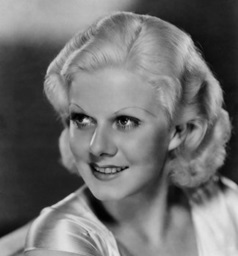
1937 – Legendary actress Jean Harlow died from uremic poisoning (now better known as acute renal failure, or acute kidney failure) at the age of 26.
Harlow’s first major appearance was in 1930’s Hell’s Angels but she soon became a leading lady and one of the biggest stars in the world, starring in a string of hit films including Red Dust, Dinner At Eight, Reckless, and Suzy.
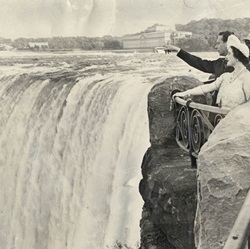
1939 – King George VI became the first British monarch to visit the United States when he and his wife, Elizabeth, crossed the Canadian-U.S. border to Niagara Falls, NY.
The royal couple subsequently visited New York City and Washington, D.C., where they called for a greater U.S. role in resolving the crisis in Europe.
A strong bond of friendship was forged between the King and President Franklin Roosevelt during the tour, which had major significance in the relations between the United States and the United Kingdom through the ensuing war years.
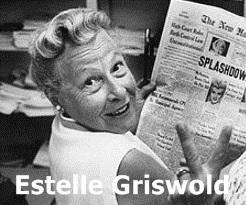
1965 – The U.S. Supreme Court handed down its decision in Griswold v. Connecticut. The case involved a Connecticut law that prohibited any person from using “any drug, medicinal article or instrument for the purpose of preventing conception.” Estelle Griswold, the executive director of the Planned Parenthood League of Connecticut, had challenged the law.
By a vote of 7–2, the Supreme Court invalidated the law on the grounds that it violated the “right to marital privacy,” establishing the basis for the right to privacy with respect to intimate practices.
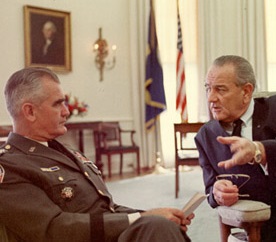
1965 – Gen. William Westmoreland told President Lyndon B. Johnson that the Communist insurgency in South Vietnam could be defeated if an additional 44 battalions of U.S. combat troops were placed under his command.
Westmoreland’s request sparked a debate within the Johnson administration. Some officials in the White House, the State Department and the intelligence community opposed the request because, they said, it would entail a fundamental change in the American role in Vietnam.
Just so you know: On March 8, 1965, the first U.S. combat troops arrived in Vietnam as 3,500 Marines landed at China Beach to defend the American air base at Da Nang. They joined 23,000 American military advisors already in Vietnam.
On July 28, Johnson approved Westmoreland’s request, increasing the U.S. military presence to 125,000 men. Monthly draft calls were doubled to 35,000. By year’s end U.S. troop levels in Vietnam reached 184,300.
Time magazine chose General William Westmoreland as 1965’s “Man of the Year”.
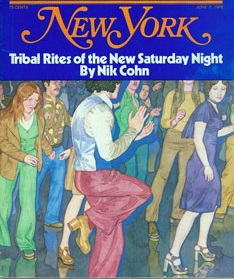
1976 – A magazine article detailing the “true life” struggles and dreams of a talented, young, Italian-American disco dancer and his scruffy entourage in Bay Ridge, Brooklyn, was published in New York magazine.
That article – The Tribal Rites of the New Saturday Night by journalist Nik Cohn – was the source material for the 1977 film, Saturday Night Fever, starring John Travolta.
There was just one problem, though. Cohn’s supposedly nonfiction article was a product of his imagination. His admission of the fabrication came in 1994.

1982 – Priscilla Presley opened Graceland to the public. To date, the former home of Elvis Presley has drawn over 21 million visitors. Graceland was designated a National Historic Landmark on March 27, 2006.
Idle Thought: Why, why, why did this woman think she needed plastic surgery on that beautiful face? Aging happens. Live with it.

2008 – Sports journalist/broadcaster Jim McKay, host of ABC’s Wide World of Sports for most of its 37-year history, died from natural causes at the age of 86.
His introduction for Wide World – “Spanning the globe to bring you the constant variety of sport… the thrill of victory… and the agony of defeat… the human drama of athletic competition… This is ABC’s Wide World of Sports!” – has passed into American pop culture.
Wide World aside, Jim McKay is rightfully best remembered for his coverage of an international tragedy; an event which had people who were only slightly interested in sports watching with rapt attention.
While covering the Munich massacre at the 1972 Summer Olympics for ABC, McKay took on the job of reporting the events live on his only scheduled day off during the Games. He was on air for fourteen hours without a break. After an unsuccessful rescue attempt of the Israeli athletes held hostage, McKay came on the air with this statement:
“When I was a kid my father used to say ‘Our greatest hopes and our worst fears are seldom realized.’ Our worst fears have been realized tonight. They have now said there were 11 hostages; two were killed in their rooms yesterday morning, nine were killed at the airport tonight. They’re all gone.”
Compiled by Ray Lemire ©2018 RayLemire.com. / Streamingoldies.com. All Rights Reserved.